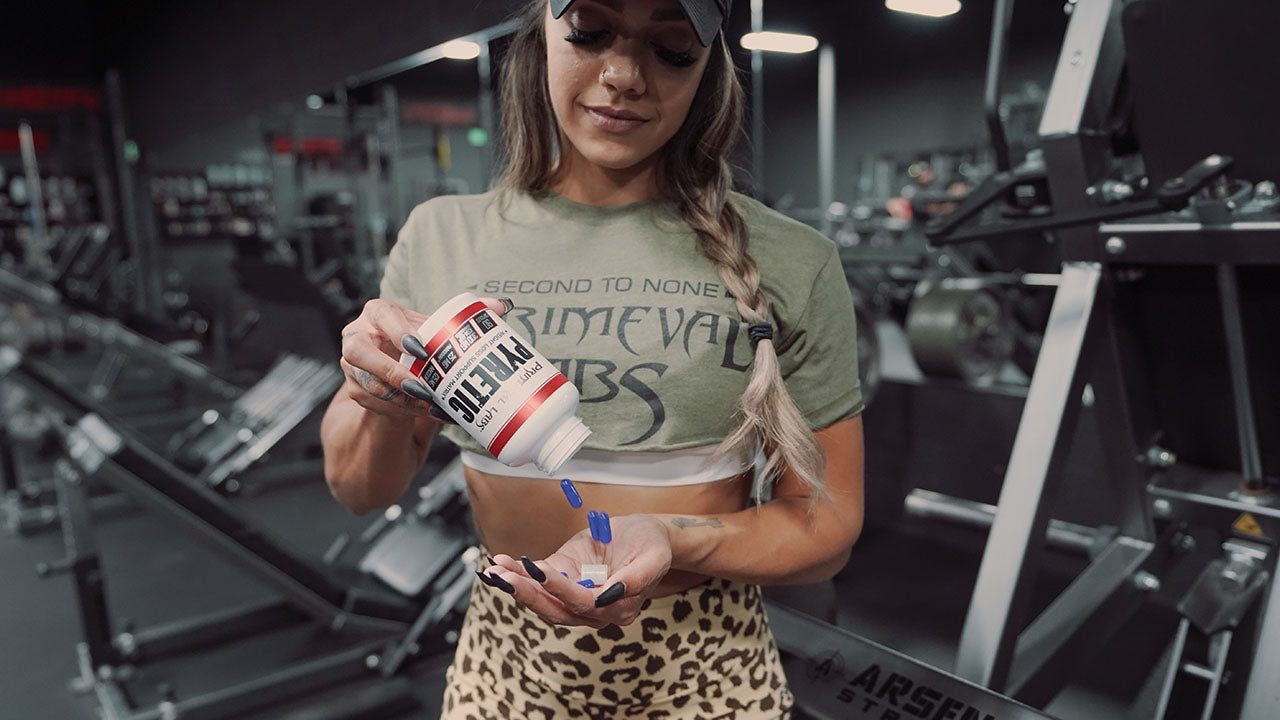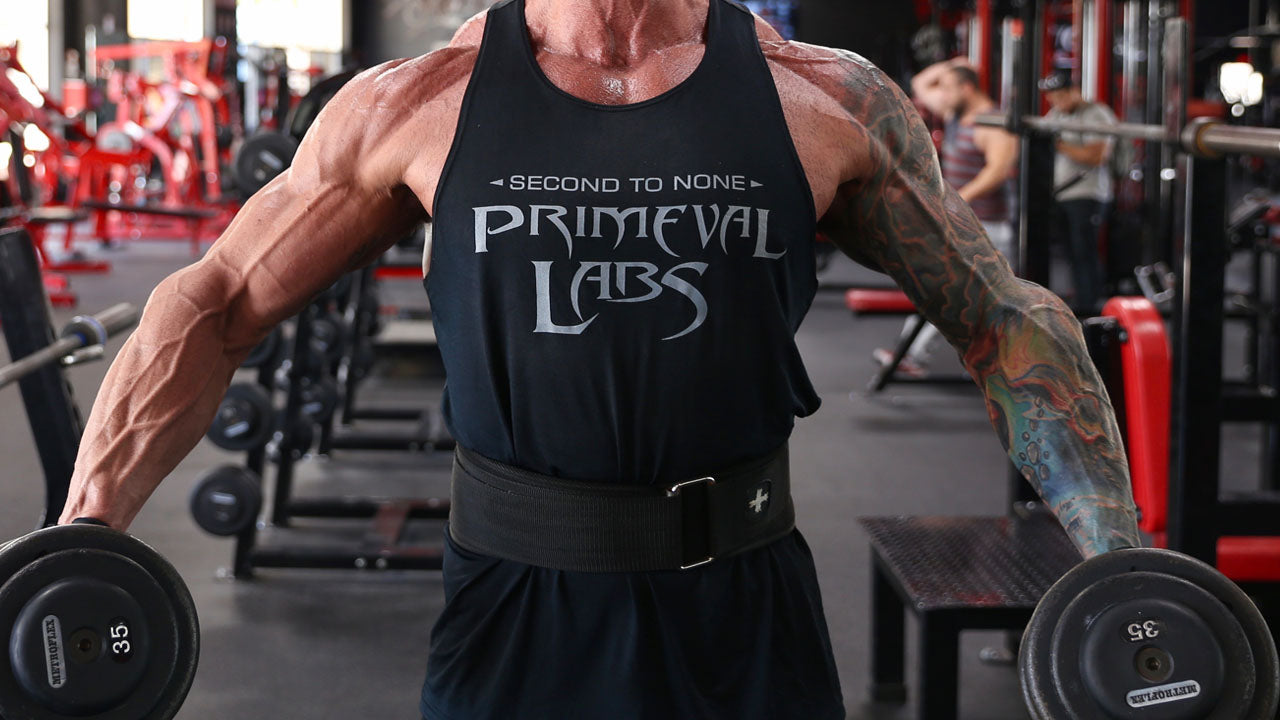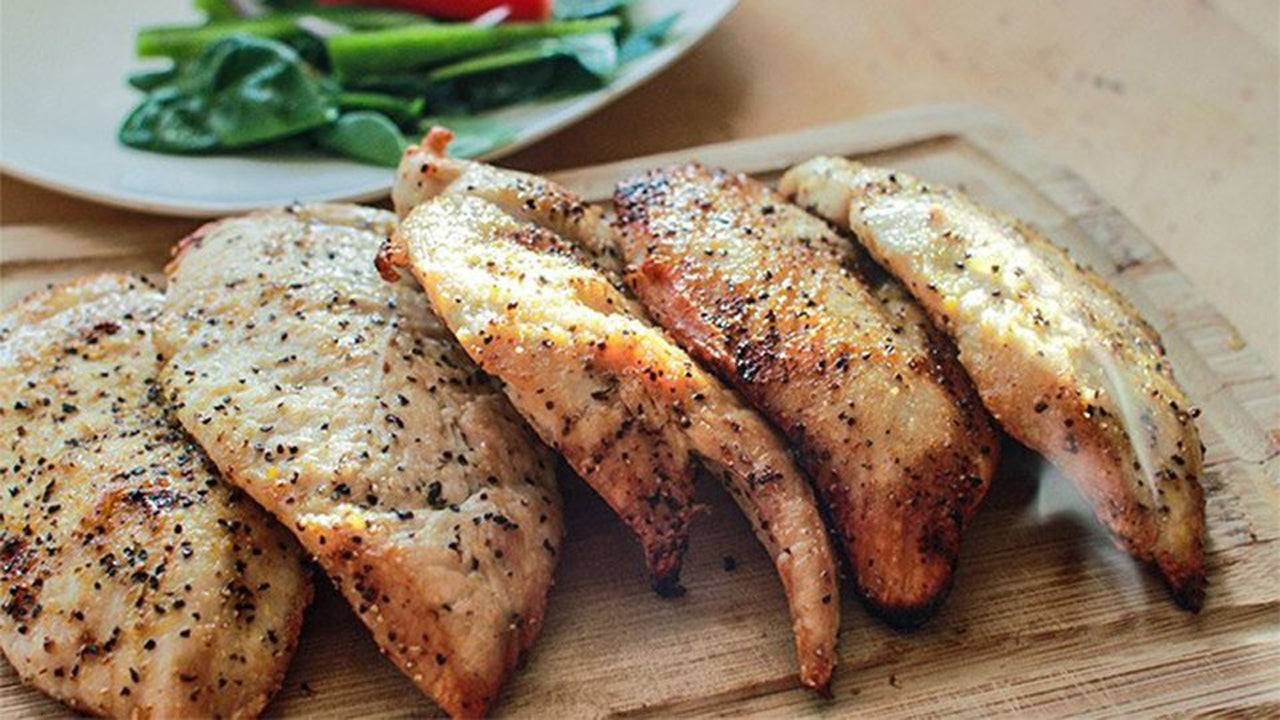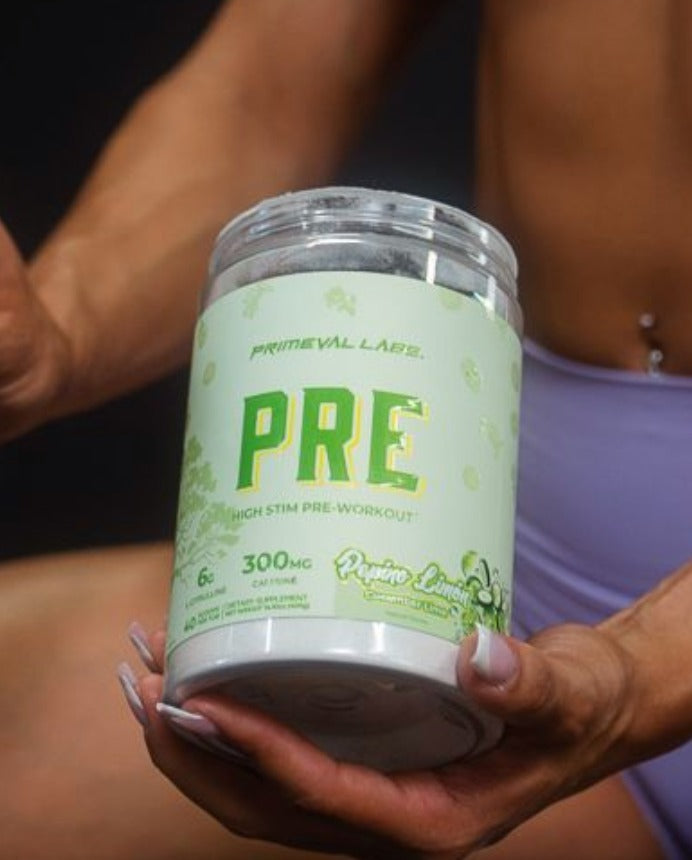Do you enjoy hitting the gym to lift weights, yet dread the days of having to do endless bouts of cardio?
Then listen up, because we’ve got all the information you need about getting all the same fat-burning benefits of steady-state cardio in a fraction of the time.
We’re talking about High-Intensity Interval Training, and we have a full guide to take you from novice to expert in this cutting-edge fat loss protocol!
What is High-Intensity Interval Training?
High-Intensity Interval Training, HIIT for short, is a form of exercise that combines short periods of intense, all-out effort with brief periods of rest. When we say “all-out” effort, we mean that you’re performing these intervals with an intensity of at least 80% of your maximum heart rate.
HIIT workouts force your body to exercise at, or above, its VO2 max, which not only promotes dramatic improvements in your athletic conditioning but also sheds fat like you wouldn’t believe!
Interval training also a more time-efficient option for cardio since HIIT burns far more calories on a per-minute basis than typical steady-state cardio options such as jogging.
Moreover, HIIT training also boosts metabolism for hours after the session is over. The same cannot be said for steady-state cardio.
Benefits of High-Intensity Interval Training (HIIT)
Maybe you’re not sold on the idea of HIIT training just yet, but maybe this list of benefits will help change your mind:
Increased VO2 Max
Intervals training has been documented to increase VO2max compared to continuous (i.e. steady-state) aerobic training, even though HIIT sessions are far shorter in duration.[1]
Why is this important?
VO2 max is an important metric in gauging overall conditioning and athletic performance. The greater you VO2 max, the better conditioned (“in shape”) you are, which means you can perform at a higher output for longer periods of time without succumbing to fatigue.
Increased Fat Loss
HIIT not only improves athleticism, but it’s also more effective for fat loss than steady-state cardio.
Research in the Journal of Strength and Conditioning showed that four weeks of H.I.I.T rowing burned more body fat compared to steady-state rowing, even though the HIIT rowing lasted for a shorter amount of time![2]
In other words, HIIT saves time, improves athleticism and sheds fat better than traditional cardio training.
Preserves Muscle Mass
Dieting for fat loss requires that energy expenditure exceed energy intake. In other words, you need to consume fewer calories than your body needs to maintain its weight.
One of the potential pitfalls when dieting is the risk of losing muscle mass due to the increased energy expenditure and decreased food intake.
Research has also shown that longer cardio sessions may be more likely to inhibit strength and muscle growth as well as result in muscle breakdown.[3]
HIIT reduces the likelihood the body will breakdown muscle tissue for fuel while still maximizing fat loss, making it a superior choice for muscle preservation during a cut.
Versatility
Another of the great many benefits of HIIT training is that it can literally be done with (or without) any piece of equipment. That means if you’re stuck at home, you can still get in one hell of an ass-kicking, fat-shredding workout -- no elliptical, treadmill, or barbell, NO problem!
HIIT workouts can be done with dumbbells, kettlebells, medicine balls, resistance bands, and even your own body weight. You can even do HIIT with barbells, but you’ll generally near longer rest periods.
Real-World Training
HIIT training is a more functional, real-world type of training, ideal for athletes and individuals looking to maximize performance.
Compared to steady-state forms of cardio like walking on a treadmill, HIIT training revolves around sprints, jumps, squats, and other powerful movements that translate into greater athleticism.
Plus, research shows that traditional forms of cardio actually decrease strength, muscle mass, and speed.[4]
Enjoyment
As crazy as it may seem to enjoy intense exercise, H.I.I.T. training has been proven in the clinical setting to be more enjoyable than other forms of cardio. Specifically, researchers enlisted sedentary adults and had them undertake either steady-state or HIIT interval training workouts.
At the conclusion of the six-week trial, the team of researchers found that HIIT was more enjoyable than moderate forms of cardio.[5]
How Does HIIT Work?
HIIT training is pretty straightforward -- exercise intervals are performed at a minimum intensity of 80% of your max heart rate for a set amount of time, immediately followed by a lower intensity “recovery” interval.
Pushing your body in this manner stimulates your energy systems into high gear, thereby generating the extra energy you need to perform at a high level.
HIIT training utilizes both the anaerobic and aerobic energy systems of the body.
The anaerobic energy system is utilized when performing high-intensity exercises, including HIIT training.
In the anaerobic system, you can exercise with maximum effort for about 10 seconds and high effort for 2-3 minutes. The higher your effort output, the quicker fatigue sets in, and the awful burning sensation hit your muscles.
The aerobic energy system is activated during your “recovery” intervals, as your body uses oxygen to create energy for lower intensity activities for longer durations, such as jogging. The aerobic system also replenishes the energy expended by the anaerobic system during this recovery interval, which primes you for your next bout of intense exercise.
HIIT for All Levels
So, you’re ready to see what HIIT has to offer.
Now, the next question is -- where to start?
Well, we’ve got 3 different HIIT workouts for each level -- beginner, intermediate, and advanced.
If you’re new to the world of HIIT training, we strongly encourage you start with the beginner workout and work your way up as your conditioning improves.
Without further adieu, here are the HIIT training options:
Beginner
For the beginner HIIT workout, you’ll perform exercises for 30 seconds continuously, followed by 30 seconds of rest.
You will repeat this sequence until time is up. During your “rest” period, you can walk or jog in place, but NO sitting down or laying down!
-
Jumping Jacks
-
Push-Ups
-
Bodyweight Squats
- Mountain Climbers
Perform 4-5 rounds for a 15-20 minute beginner HIIT workout.
Intermediate
Now that you’ve graduated from the tadpoles group of HIIT trainees, it’s time to up the ante on your intensity. Since your conditioning is better at the intermediate level, work periods are increased, while rest ratios are decreased.
For this workout, you’ll be exercising at a higher intensity for 40 seconds, and only recovering for 20 seconds:
-
Jumping Lunges
-
Dumbbell Renegade Row
-
Dumbbell Thrusters
- Push-Ups
Perform a total of 4-5 rounds.
Advanced
It’s time to see what you’re really made of. This advanced HIIT workout is for the elite athletes out there looking to seriously push the envelope and limits of their conditioning capacity. In this workout, you’ll be performing each exercise for 30 seconds and only get a rest period AFTER you’ve completed the sequence.
This one’s going to hurt!
-
Box Jumps
-
Kettlebell (or Dumbbell) Swings
-
Burpees
-
Dumbbell Thrusters
-
Alternating Lunges
- Chin Ups
Rest 60 seconds and then get back to work!
Repeat this sequence for a total of 4-5 times, or until you’re unable to complete each exercise with proper form.
Time to HIIT It!
High-Intensity Interval Training is the athlete's solution for cardio.
It sheds fat, spares muscle, and saves time. The only thing it requires from you is a commitment to give it your all each and every time...otherwise, you’re wasting your time!
HIIT training isn’t easy, but the multitude of benefits it offers is second to none. Now, it’s time for you to get after it and HIIT it!
References
- Matsuo T, Saotome K, Seino S, et al. Effects of a low-volume aerobic-type interval exercise on VO2max and cardiac mass. Med Sci Sports Exerc. 2014;46(1):42-50. doi:10.1249/MSS.0b013e3182a38da8. https://www.ncbi.nlm.nih.gov/pubmed/23846165
- Shing CM, Webb JJ, Driller MW, Williams AD, Fell JW. Circulating adiponectin concentration and body composition are altered in response to high-intensity interval training. J strength Cond Res. 2013;27(8):2213-2218. doi:10.1519/JSC.0b013e31827e1644. https://www.ncbi.nlm.nih.gov/pubmed/23222083
- Gergley JC. Comparison of two lower-body modes of endurance training on lower-body strength development while concurrently training. J strength Cond Res. 2009;23(3):979-987. doi:10.1519/JSC.0b013e3181a0629d. https://www.ncbi.nlm.nih.gov/pubmed/19387377
- Wilson JM, Marin PJ, Rhea MR, Wilson SMC, Loenneke JP, Anderson JC. Concurrent training: a meta-analysis examining interference of aerobic and resistance exercises. J strength Cond Res. 2012;26(8):2293-2307. doi:10.1519/JSC.0b013e31823a3e2d. https://www.ncbi.nlm.nih.gov/pubmed/22002517
- Heisz JJ, Tejada MGM, Paolucci EM, Muir C (2016) Enjoyment for High-Intensity Interval Exercise Increases during the First Six Weeks of Training: Implications for Promoting Exercise Adherence in Sedentary Adults. PLoS ONE 11(12): e0168534. https://doi.org/10.1371/journal.pone.0168534
















Leave a comment
This site is protected by hCaptcha and the hCaptcha Privacy Policy and Terms of Service apply.